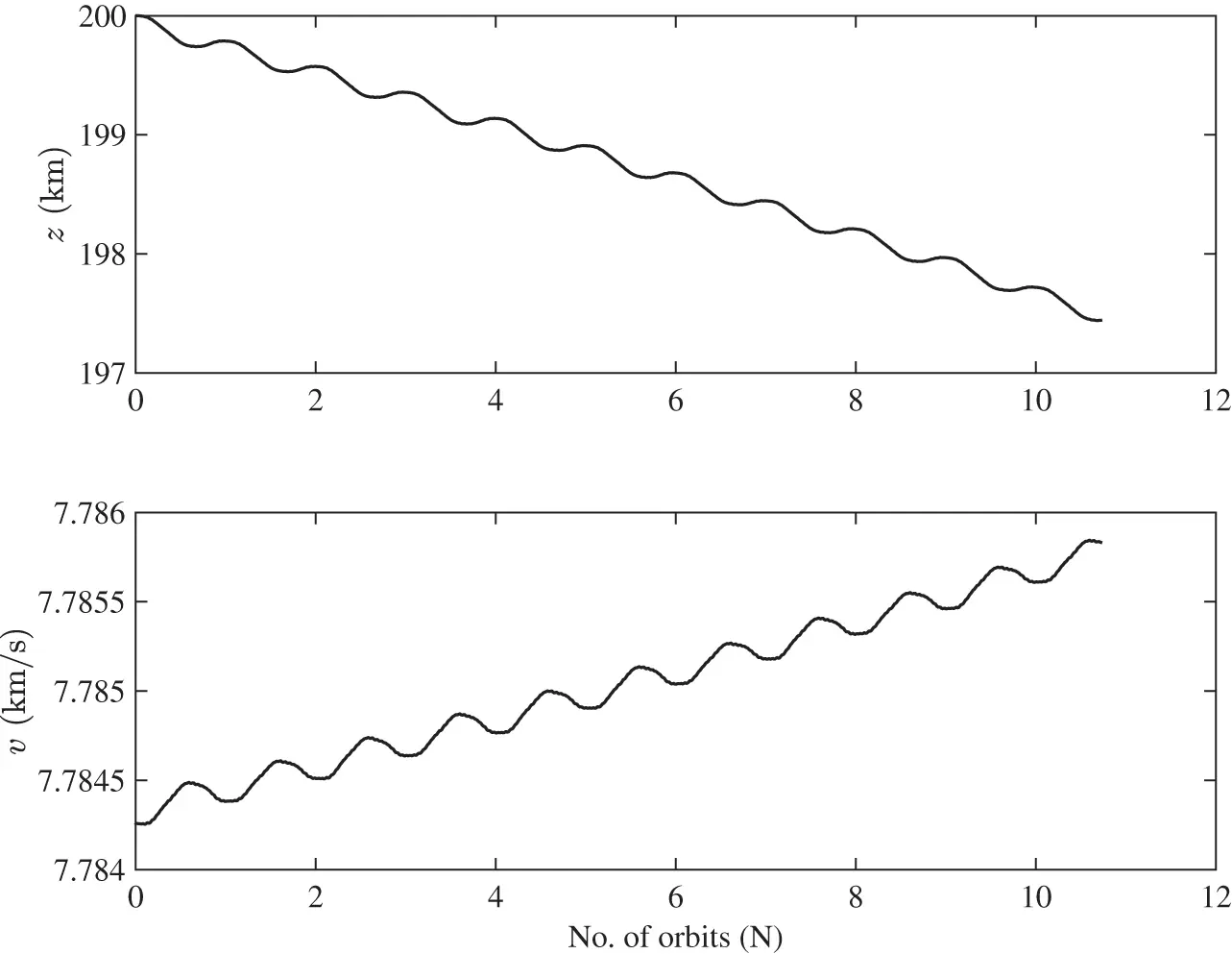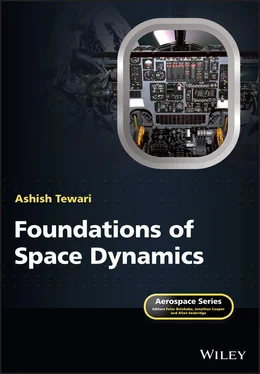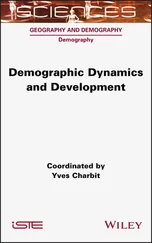Table 1.1Variation of density with altitude in Earth's atmosphere
Altitude,  (km) (km) |
Density,  |
| 0 |
1.2252 |
| 1 |
1.1119 |
| 5 |
0.7366 |
| 10 |
0.4136 |
| 20 |
0.0891 |
| 30 |
0.0185 |
| 40 |
0.0041 |
| 50 |
0.0011 |
| 60 |
 |
| 70 |
 |
| 80 |
 |
| 90 |
 |
| 100 |
 |
| 110 |
 |
| 120 |
 |
| 150 |
 |
| 200 |
 |
| 250 |
 |
Apart from the atmospheric effects, there are other environmental perturbations to a spacecraft's flight around a central body, which is assumed to be spherical as required by Eq. (1.2). These are the gravity of the actual (non‐spherical) shape of the central body, as well as the gravity of other remote large bodies, and the solar radiation pressure. However, such effects are typically small enough to be considered small perturbations when compared to the spherical gravity field of the central body given by Eq. (1.2). Such effects can be regarded as small perturbations applied to the orbit governed by Eq. (1.2), and should be carefully modelled in order to predict the actual motion of the spacecraft.

Figure 1.1Decay in the orbit due to atmospheric drag for a spacecraft initially placed in a circular orbit of  km around Earth.
km around Earth.

Figure 1.2Decay in the orbit due to atmospheric drag for a spacecraft initially placed in a circular orbit of  km around Earth.
km around Earth.
1.1.2 Gravity as the Governing Force
Space flight is primarily governed by gravity. “Governing” implies dictating the path a given body describes in a three‐dimensional space. Aircraft and rocket flights are not primarily governed by gravity, because there are other forces acting on the body, such as the lift and the thrust, which are of comparable magnitudes to that of gravity and therefore determine the flight path. Discovered and properly analyzed for the first time by Newton in the late  century, gravity can be expressed simply, but has profound consequences. For example, by applying Newton's law of gravitation, it could have been inferred that the universe cannot be static, because gravity would cause all the objects to collapse towards a single point. However, this simple fact escaped the notice of all physicists ranging from Newton himself to Einstein, until it was observed by Hubble in 1924 that the universe is expanding at a rate which increases with the distance between any two objects. A reader may be cautioned against the complacency which often arises by treating the motion governed by gravity as simple (even trivial) to understand. There are many surprising and interesting consequences of gravity being the governing force in flight, such as Kepler's third law of planetary motion, which implies that the time period of an orbiting body depends only upon the mean radius, and is independent of the shape of the orbit. A larger part of a course on space dynamics involves understanding gravity and its effects on the motion of a body in space.
century, gravity can be expressed simply, but has profound consequences. For example, by applying Newton's law of gravitation, it could have been inferred that the universe cannot be static, because gravity would cause all the objects to collapse towards a single point. However, this simple fact escaped the notice of all physicists ranging from Newton himself to Einstein, until it was observed by Hubble in 1924 that the universe is expanding at a rate which increases with the distance between any two objects. A reader may be cautioned against the complacency which often arises by treating the motion governed by gravity as simple (even trivial) to understand. There are many surprising and interesting consequences of gravity being the governing force in flight, such as Kepler's third law of planetary motion, which implies that the time period of an orbiting body depends only upon the mean radius, and is independent of the shape of the orbit. A larger part of a course on space dynamics involves understanding gravity and its effects on the motion of a body in space.
1.1.3 Topics in Space Dynamics
Space dynamics consists of two parts: (a) orbital mechanics , which describes the translation in space of the centre of mass of a rigid body primarily under the influence of gravity, and (b) attitude dynamics , which is the description of the rotation of the rigid body about its own centre of mass. While these two topics are largely studied separately, in some cases orbital mechanics and attitude dynamics are intrinsically coupled, such as when the rigid body experiences an appreciable gravity‐gradient torque during its orbit. Furthermore, when designing an attitude control system for a spacecraft, it is necessary to account for its orbital motion. Therefore, while elements of orbital mechanics and attitude dynamics can be grasped separately, their practical application involves a combined approach.
1.2 Reference Frames and Time Scales
Space flight requires a definite background of objects to measure distances, as well as to orient the spacecraft in specific directions. Since fixed objects are hard to come by in practice, navigation and attitude determination are non‐trivial problems in space flight. Such a problem does not exist for the motion taking place on, or very close to, a solid surface, where ground‐fixed objects can serve as useful references for both navigation and orientation of the vehicles.

Figure 1.3The equinoctial sidereal frame  , the ecliptic synodic frame
, the ecliptic synodic frame  , and Earth centred celestial meridian.
, and Earth centred celestial meridian.
Читать дальше

 (km)
(km)











 km around Earth.
km around Earth.
 km around Earth.
km around Earth. century, gravity can be expressed simply, but has profound consequences. For example, by applying Newton's law of gravitation, it could have been inferred that the universe cannot be static, because gravity would cause all the objects to collapse towards a single point. However, this simple fact escaped the notice of all physicists ranging from Newton himself to Einstein, until it was observed by Hubble in 1924 that the universe is expanding at a rate which increases with the distance between any two objects. A reader may be cautioned against the complacency which often arises by treating the motion governed by gravity as simple (even trivial) to understand. There are many surprising and interesting consequences of gravity being the governing force in flight, such as Kepler's third law of planetary motion, which implies that the time period of an orbiting body depends only upon the mean radius, and is independent of the shape of the orbit. A larger part of a course on space dynamics involves understanding gravity and its effects on the motion of a body in space.
century, gravity can be expressed simply, but has profound consequences. For example, by applying Newton's law of gravitation, it could have been inferred that the universe cannot be static, because gravity would cause all the objects to collapse towards a single point. However, this simple fact escaped the notice of all physicists ranging from Newton himself to Einstein, until it was observed by Hubble in 1924 that the universe is expanding at a rate which increases with the distance between any two objects. A reader may be cautioned against the complacency which often arises by treating the motion governed by gravity as simple (even trivial) to understand. There are many surprising and interesting consequences of gravity being the governing force in flight, such as Kepler's third law of planetary motion, which implies that the time period of an orbiting body depends only upon the mean radius, and is independent of the shape of the orbit. A larger part of a course on space dynamics involves understanding gravity and its effects on the motion of a body in space.
 , the ecliptic synodic frame
, the ecliptic synodic frame  , and Earth centred celestial meridian.
, and Earth centred celestial meridian.










